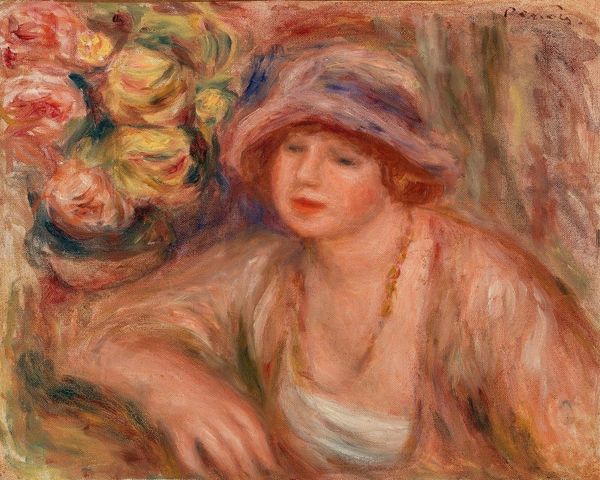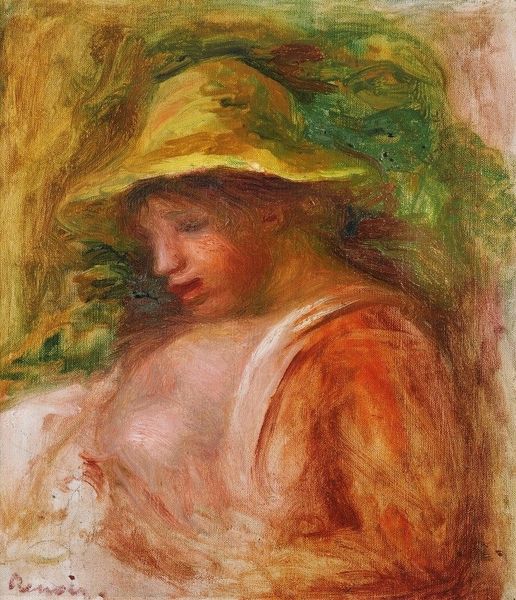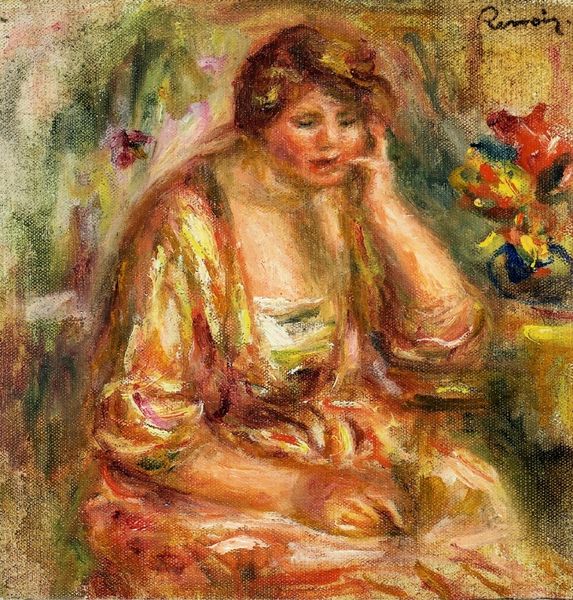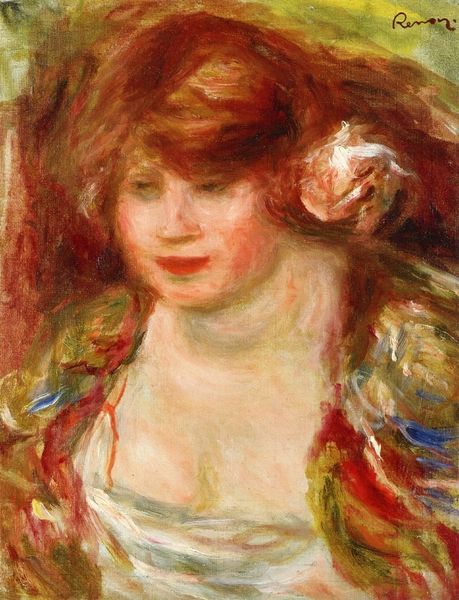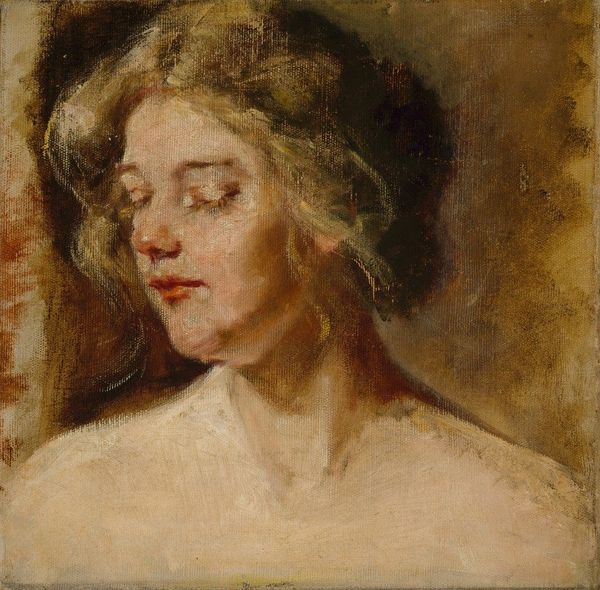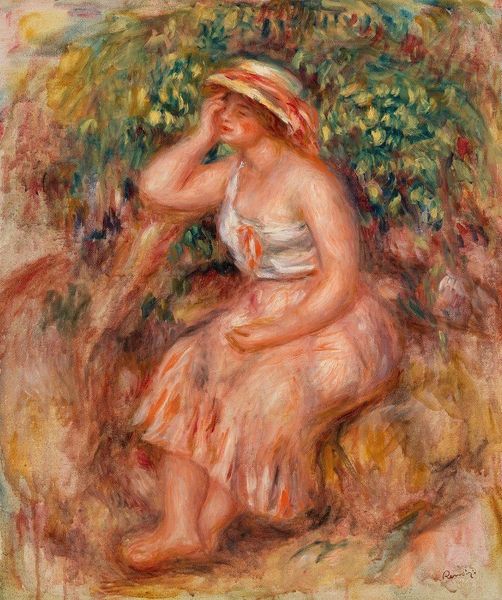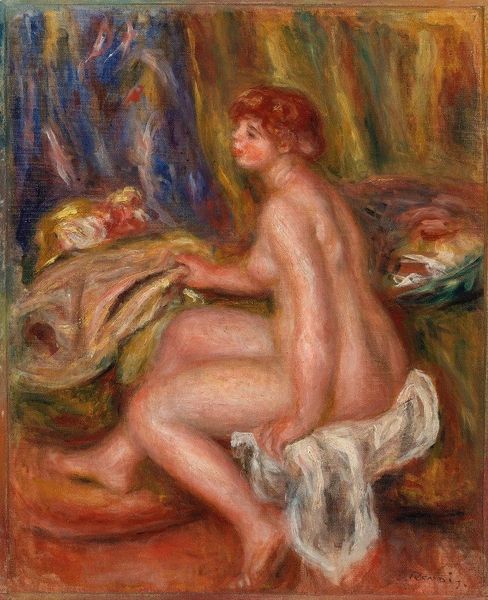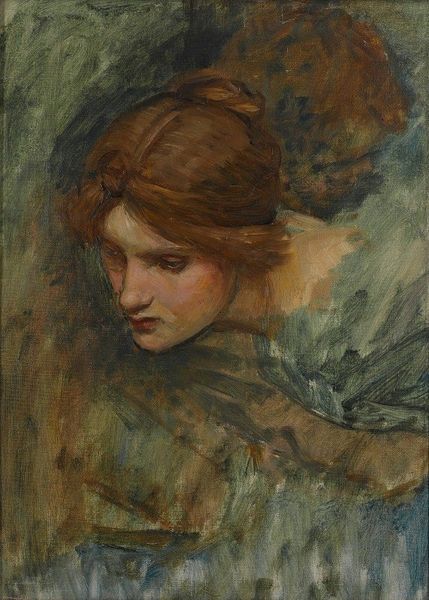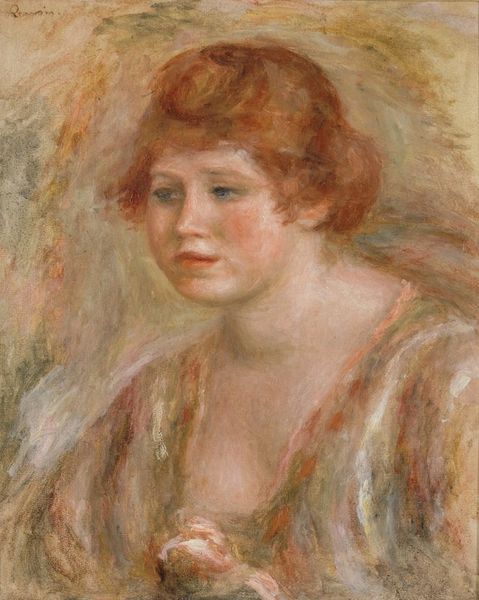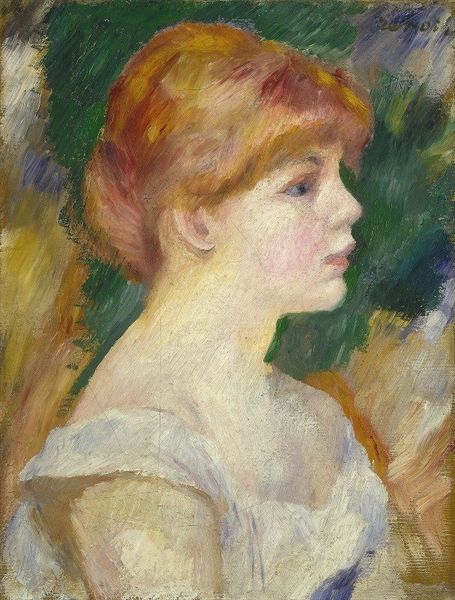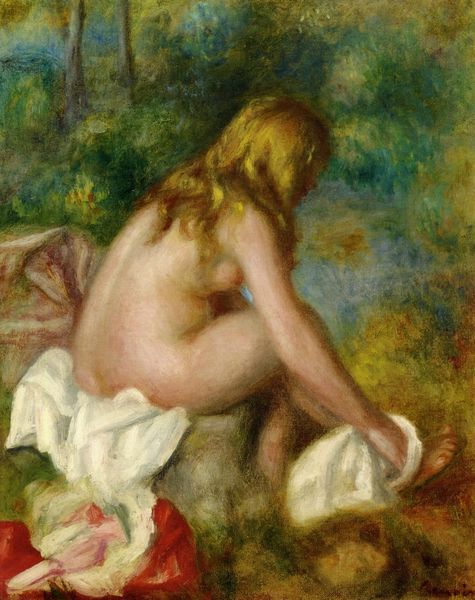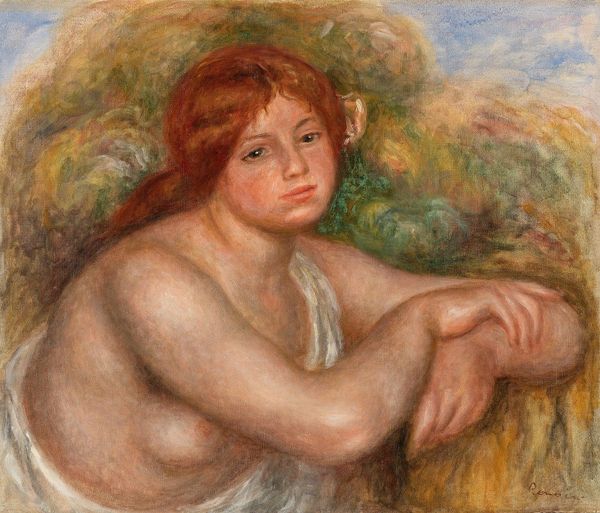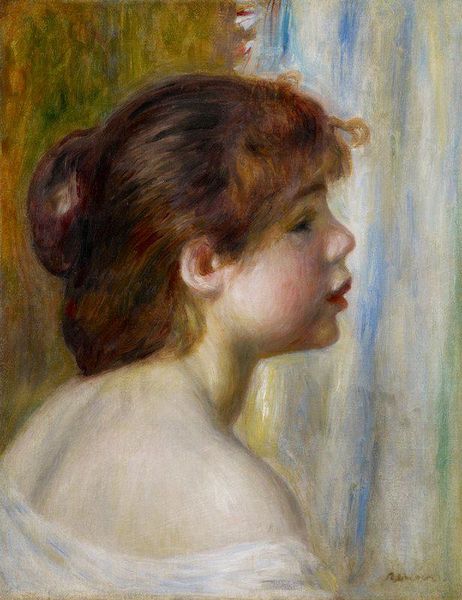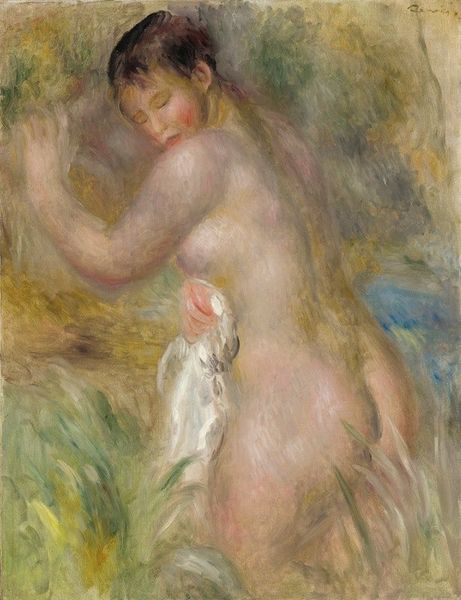
Copyright: Public Domain: Artvee
Curator: Here we have Pierre-Auguste Renoir's oil on canvas, "Andrée au turban jaune – Fragment," painted circa 1918. Editor: The immediate impression is one of soft light and tranquility, a sort of intimate moment captured. There's a vulnerability in her gaze. Curator: Indeed, the turban itself—the yellow headband— functions almost like a halo, imbuing Andrée with a saintly aura. Head coverings are a pervasive element throughout the history of art; their meaning evolving over centuries and civilizations: piety, certainly, but also status. Here it serves a gentler, more personal purpose. Editor: It’s fascinating to think about that context, given the time period. The First World War was raging. The portrait’s softness and femininity almost feels like a conscious rejection of the masculine violence that dominated the era. It makes you consider who Andrée might have been. Was she connected to the war effort somehow? Curator: What also catches my attention is the symbolism inherent in the way Renoir constructs femininity. He uses classic tropes--bare shoulders, a sidelong gaze, flowers placed in the background—in an incredibly timeless manner, not at all ironic or detached. The fragmented aspect, suggested in the title, lends it a more intimate and incomplete narrative. We become active participants by filling in the blanks of the larger portrait that has gone missing. Editor: It is tempting to contextualize Renoir’s depiction within contemporary gender dynamics and representation of the female gaze. But one thing that strikes me here, despite how the work evokes Romantic and even Pre-Raphaelite ideals, is Andrée’s calm expression, the refusal to comply with an idealized image. It is almost as though she is a very ordinary, modern woman caught in a tableau of classical iconography. Curator: Absolutely. It speaks to the continuity of how beauty has been depicted in art through a particular feminine archetype, a type that manages to permeate and persevere beyond shifting artistic approaches and schools. The woman's inner qualities shine from within her physical form, an external manifestation of character. Editor: Ultimately, for me, Renoir's approach provides an interesting study in contrast. What this fragment invokes—a serene contemplation—might also, historically, reflect a quiet moment of respite. It highlights a stark distinction from the external forces defining society during that tumultuous time.
Comments
No comments
Be the first to comment and join the conversation on the ultimate creative platform.
